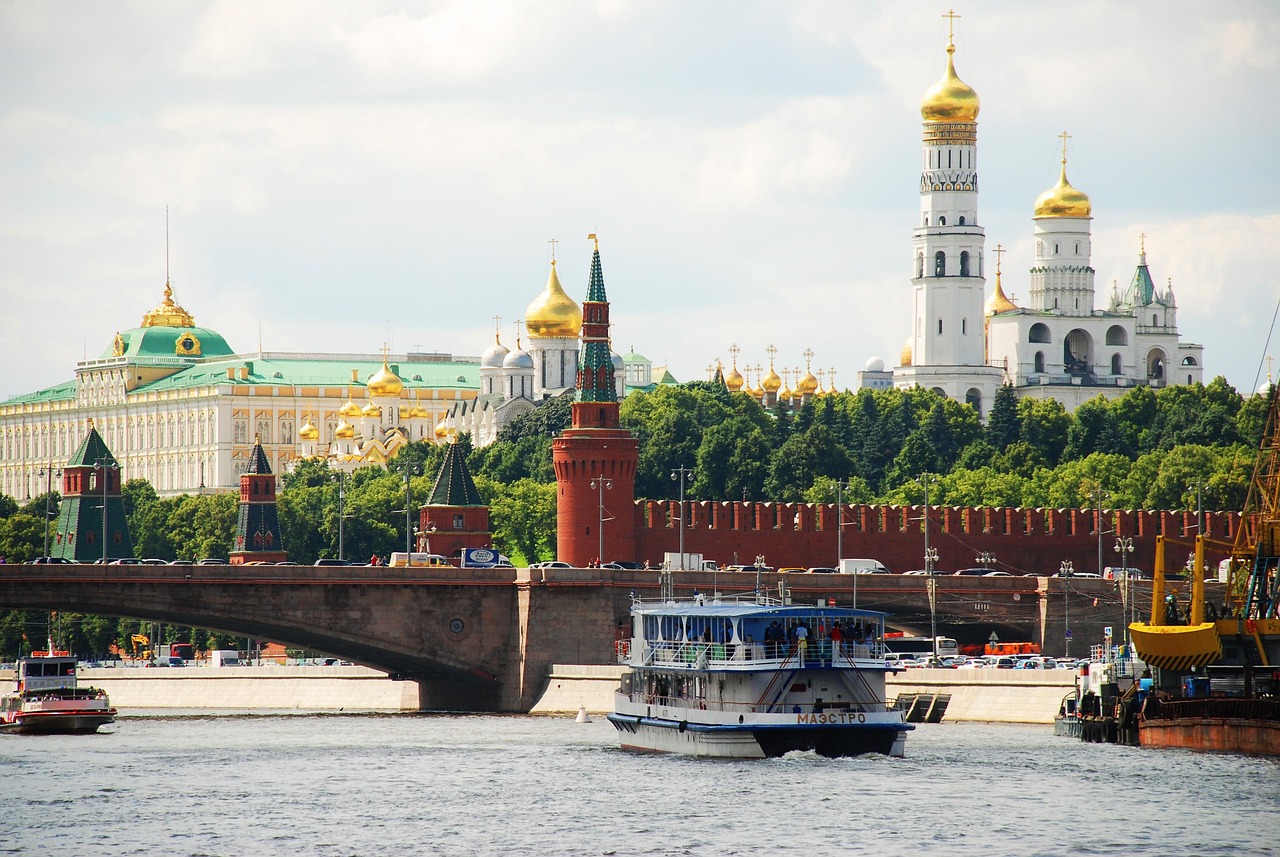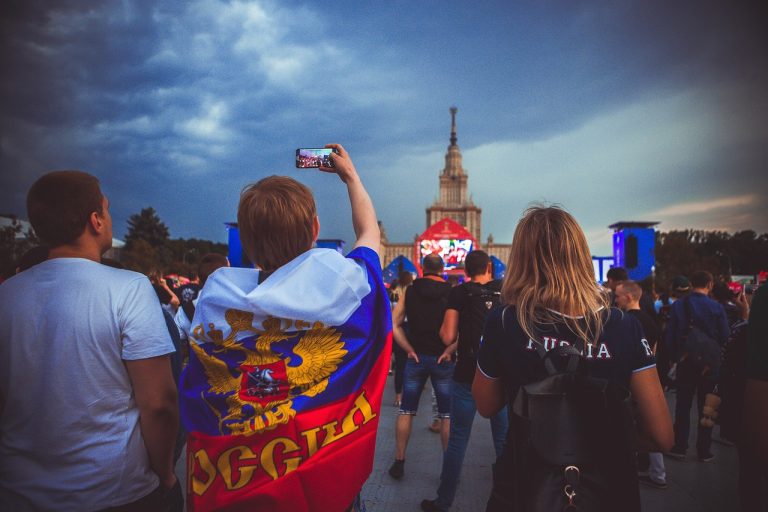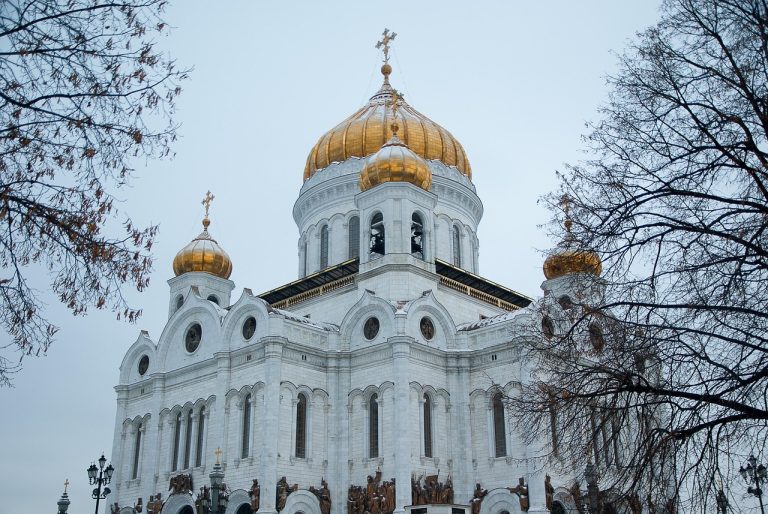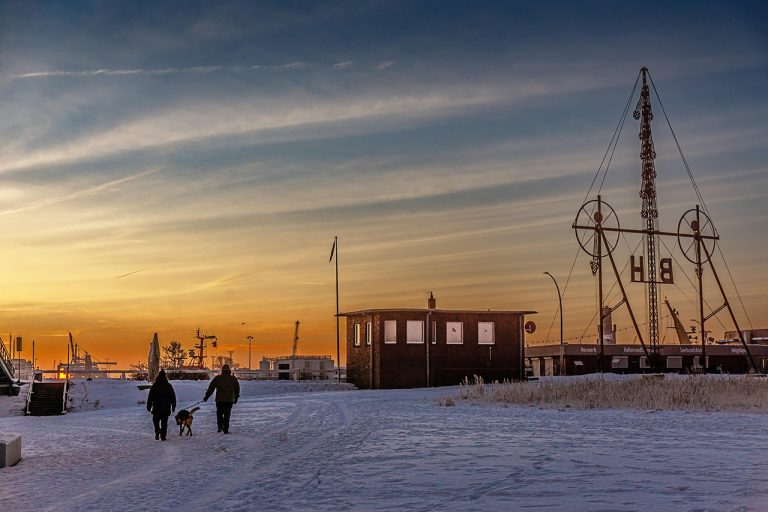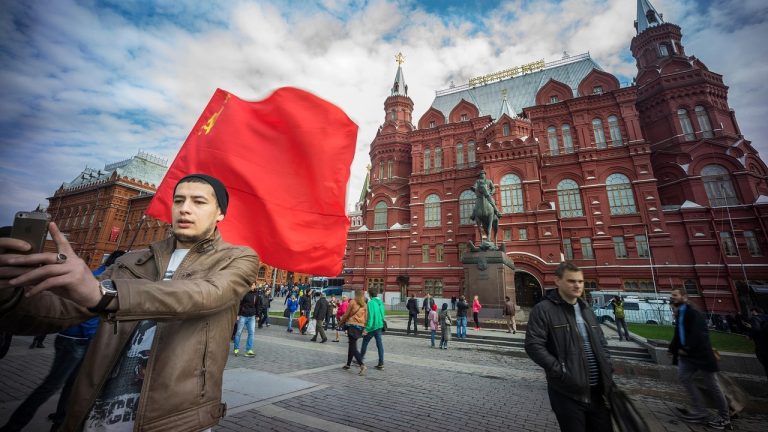Russia covers two continents and 11 time zones. You can’t see it all in one trip. But, the journey is worth it for the history, architecture, and vibrant culture of its cities.
Moscow is famous for the Kremlin, Red Square, and its modern skyline. St. Petersburg dazzles with the Winter Palace and the Hermitage. Its canals light up in summer.
The Golden Ring offers towns like Suzdal and Vladimir. Kazan mixes Russian and Tatar cultures. Sochi has Black Sea beaches and Caucasus mountains.
The Trans-Siberian Railway connects key cities like Perm and Vladivostok. Karelia has wooden churches and lakes. Volgograd has World War II memorials. This guide helps you explore Russia’s top cities.
Why Russia’s Urban Centers Belong on Your Bucket List
Russia’s cities blend old-world charm with a vibrant modern vibe. By day, you’ll find historic palaces and squares. At night, the streets come alive with culture and entertainment. Exploring these cities is a journey through layers of history, culture, and design.
St. Petersburg is a treasure trove of history, with the Hermitage Museum and canals. Nearby, Peterhof, Pushkin, and Pavlovsk offer a glimpse into royal life. Moscow, on the other hand, is known for its grand Red Square and the Kremlin. Its metro is a marvel, often called the “underground palace.”
The Golden Ring is a collection of medieval towns with stunning kremlins and onion domes. Kazan is a unique blend of European and Asian cultures, with a UNESCO-listed kremlin. Sochi offers a mix of beach life and skiing, making it a standout destination.
The Trans-Siberian Railway connects Moscow to Vladivostok, covering over 9,000 kilometers. Planning your trip is key, as some places require extra travel. With visas in order, you can enjoy the journey without stress.
From museums to markets, there’s always something to do. Art enthusiasts will love the Hermitage, while architecture fans will enjoy Moscow’s unique buildings. Beach lovers will find their paradise along the Black Sea. Russia’s cities are full of surprises, inviting you to explore every corner.
Moscow: Capital Icons, Nightlife, and “Underground Palaces”
Moscow is a top city in Russia, blending old and new. By day, it’s grand avenues and river views. At night, it’s all about the bars and clubs.
Essential Landmarks: Red Square, the Kremlin, and St. Basil’s Vistas
Red Square is the heart of Moscow. It’s surrounded by the Kremlin and St. Basil’s Cathedral. GUM’s arcades add a touch of elegance, while the State Historical Museum stands tall.
Victory Park and the Novodevichy Convent add a somber note. They are part of Moscow’s rich history.
Classic Culture: Bolshoi Theatre and Grand Cathedral Architecture
The Bolshoi Theatre is famous for its ballet and opera. Christ the Savior Cathedral shines with its gold domes. These landmarks make Moscow a cultural hub.
Moscow Metro: Efficient Transit and Palatial Station Design
The Moscow Metro is a marvel. It has marble halls, mosaics, and chandeliers. Stations like Komsomolskaya and Mayakovskaya are like underground galleries.
It’s fast, cheap, and known as the “underground palaces.”
Neighborhoods and Routes: Arbat, VDNKh, Kolomenskoe, and Day Trips to the Golden Ring
Walk down Old Arbat for music and cafes. VDNKh has huge pavilions and the Museum of Cosmonautics. Kolomenskoe Estate offers green spaces and history.
It’s easy to visit the Golden Ring. Places like Sergiev Posad and Suzdal show Moscow’s softer side.
Getting There and Around: Transport Hub Linking Largest Cities in Russia
Moscow is easy to reach by train or plane. High-speed Sapsan trains and flights connect it to other cities. It’s a great starting point for exploring Russia.
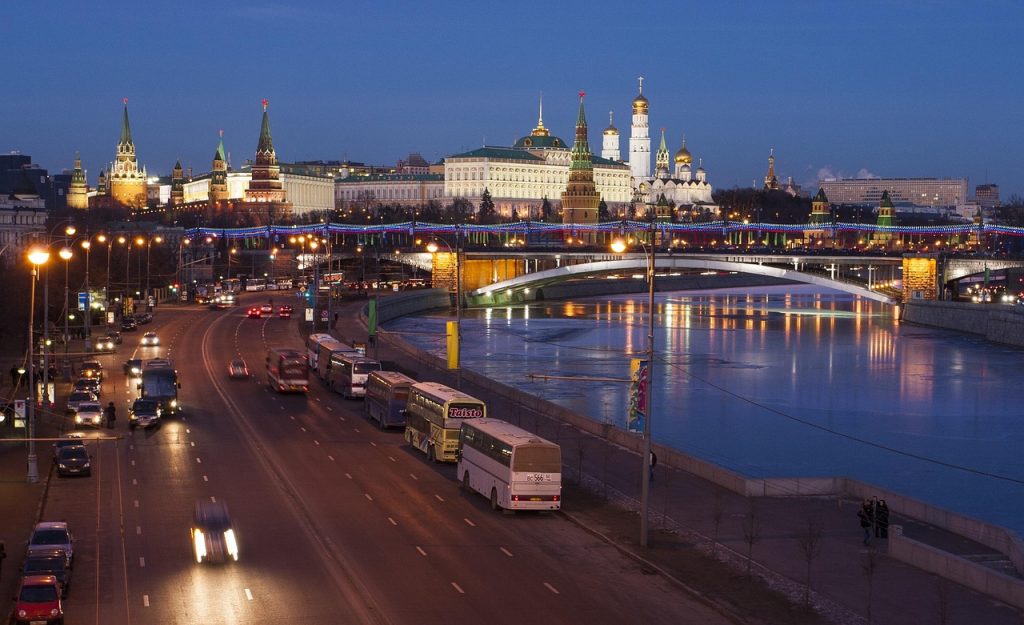
St. Petersburg: Northern Capital, Canals, and Imperial Splendor
Peter the Great’s city is a mix of Baltic light and bold architecture. It’s known for its grand avenues, baroque facades, and water everywhere. This makes it a top city in Russia, famous for its museums, theaters, and story-filled streets.
Hermitage at the Winter Palace: Art Treasure House in the Historic Center
The State Hermitage Museum is filled with works by Rembrandt, Leonardo da Vinci, and Matisse. The galleries shine with gilded halls and river views. It’s a must-see for art lovers, with a collection that could take days to explore.
Suburban Palaces: Peterhof, Pushkin (Tsarskoye Selo), and Pavlovsk
Day trips to these palaces offer a glimpse into imperial drama. Peterhof is known for its Grand Cascade fountains and Gulf of Finland breezes. Pushkin’s Catherine Palace has the Amber Room, while Pavlovsk offers quiet parks and neoclassical grace.
Canal City Experience: “Venice of the North” Perspectives and Cruises
Boats pass by the Church of the Savior on Spilled Blood and other landmarks. Sunset rides show off onion domes and pastel mansions in soft gold. It’s a unique way to see St. Petersburg from the water, perfect for photographers.
Traveler-Friendly Touches: English Signage, Lodging, and Dining Variety
Metro stations have clear English signs, and hotels range from luxury to cozy guesthouses. Menus offer everything from pelmeni to New Nordic plates and third-wave coffee. This makes it easy for first-time visitors.
Seasonal Magic: White Nights Ambiance and Cultural Festivities
From late May to July, dusk lingers and the skyline never sleeps. The Scarlet Sails celebration lights up the Neva, and the Mariinsky Theatre stages peak-season performances. Festivals and long walks make it a top city in Russia.
| Highlight | Why It Matters | Best Time | Nearby Transit |
|---|---|---|---|
| Winter Palace & Hermitage | World-class art in imperial rooms | Year-round; fewer lines in winter | Admiralteyskaya Metro |
| Peterhof Fountains | Grand water displays and sea views | May–September | Hydrofoil from the Hermitage Pier |
| Catherine Palace, Pushkin | Amber Room and rococo splendor | Spring–Autumn | Trains from Vitebsky Station |
| Canal Cruises | “Venice of the North” scenery | Late spring to early fall | Boarding near Anichkov Bridge |
| White Nights | Extended twilight and festivals | June–early July | Citywide access by Metro and foot |
The city blends art, ease, and spectacle. It’s a highlight among urban centers in Russia. It offers a calm, walkable core, making it a top city in Russia.
Golden Ring: Storybook Kremlins and Ancient Church Architecture
North and east of Moscow, a chain of old towns forms a calm arc. This arc is made of rivers, meadows, and bell towers. Fortified kremlins and onion domes recall the Vladimir Grand Principality, long before railways linked the top cities in Russia.
Easy routes, short hops, and night trains make it simple to compare styles and pace. This is close enough to the capital yet far from big-city noise found in major cities in Russia.
Signature Cities: Sergiev Posad, Suzdal, Vladimir, Yaroslavl, Kostroma, Ivanovo, Pereslavl-Zalessky
Sergiev Posad centers on the Trinity Lavra of St. Sergius, its blue-and-gold domes shining above market streets. Suzdal feels like a village museum, where log houses and quiet lanes lead to the white walls of the Suzdal Kremlin.
Vladimir brings grand scale with the Golden Gate and the Dormition Cathedral, once a model for church art. Yaroslavl, on the Volga, mixes merchant mansions with fresco-rich churches.
Kostroma leans into river life and Romanov lore, while Ivanovo’s textile legacy shows in constructivist gems. Pereslavl-Zalessky offers lakeside monasteries and a softer skyline that pairs well with day walks.
What to See: Provincial Tranquility, Medieval Heritage, and Onion-Domed Skylines
- Kremlins and Monasteries: Stone walls, bell towers, and cloisters that shaped early Rus’ art.
- Icons and Frescoes: From Andrei Rublev’s tradition to later local schools, each town tells a visual story.
- Riverfront Promenades: Slow sunsets along the Kotorosl, Nerl, and Volga echo the region’s gentle rhythm.
- Crafts and Markets: Embroidery, ceramics, and gingerbread add color to routes through populated cities in Russia.
The result is a living gallery, distinct from the pace of key municipalities in Russia. Village soundscapes and church chimes set the mood.
Trip Planning: Easy Access from Moscow and Multi-City Itineraries
Logistics are friendly. The nearest stops sit just over an hour from Moscow; the farthest are a comfortable night train away. Trains and buses connect the loop, so a two- to four-day circuit beats a quick out-and-back.
- Short Loop: Sergiev Posad → Pereslavl-Zalessky → Rostov Veliky → Yaroslavl, ideal for a weekend.
- Classic Arc: Vladimir → Suzdal → Ivanovo → Kostroma → Yaroslavl for varied churches and river views.
- Slow Travel: Base in Suzdal or Yaroslavl, add day trips by bus or rideshare for flexible timing.
These routes pair well with longer journeys through top cities in Russia, while staying distinct from the rush of major cities in Russia. With steady links across key municipalities in Russia, the Golden Ring rewards unhurried planning and simple, scenic hops between towns.
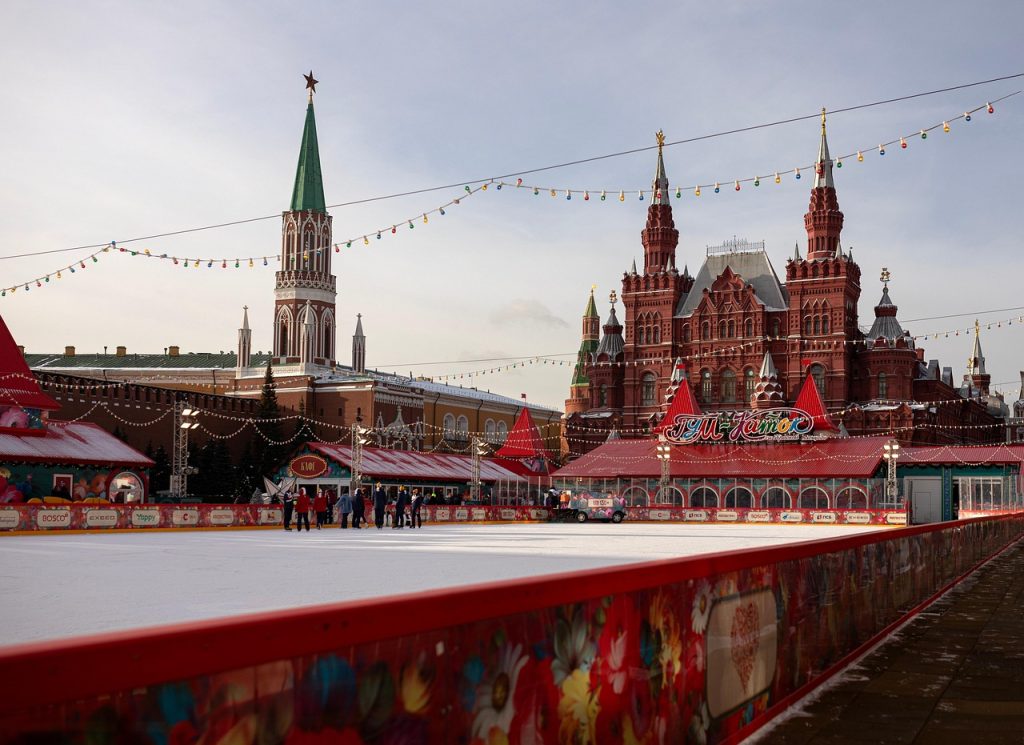
Kazan: Russia’s Third Capital and Fusion of Cultures
This lively city sits on the Volga River. It mixes Tatar and Slavic cultures, making it a standout in Russia. With its universities, arenas, and parks, it’s a hub of activity. Its rich history makes it a treasure for those who love to explore slowly.
Many travelers compare it to Moscow and St. Petersburg. But Kazan has its own unique charm. It’s warm, easy to walk around, and full of stories from different parts of the world.
Kazan Kremlin: UNESCO Site with Qol-Şärif Mosque and Annunciation Cathedral
The Qol-Şärif Mosque and Annunciation Cathedral are just steps apart. They show the blend of Europe and Asia. The Syuyumbike Tower adds to the city’s legend. Museums here tell the story of Kazan’s rise.
Sunset over the Kremlin is breathtaking. It shows why Kazan is a top cultural and architectural spot in Russia.
Old Tatar Quarter: Living Traditions, Mosques, and Local Cuisine
Staraya Tatarskaya Sloboda is filled with wooden houses. You can smell echpochmak and chak-chak from cafés. The call to prayer from mosques adds to the charm.
This area feels different from big cities. Yet, it has the same energy and charm.
Regional Excursions: Bulgar, Sviyazhsk, Chistopol, and Yelabuga
- Bulgar: Ancient Volga Bolgar ruins tell of early Islam along the river, a deep-cut chapter shared by few prominent cities in Russia.
- Sviyazhsk: An island-town with monasteries and broad water views, easy to pair with downtown sights in the same day.
- Chistopol: Literary trails linked to Boris Pasternak reward book lovers seeking quiet corners beyond major cities in Russia.
- Yelabuga: Merchant-era streets and the Shishkin House-Museum add art history to routes favored in top cities in Russia.
Getting around is easy with fast roads and river cruises. Clear signs make exploring these places simple. This makes Kazan a great example of a city that blends history with modern convenience.
Sochi: Subtropical Seaside Meets Caucasus Peaks
Sun on the Black Sea, snow on distant ridges, and palms on the promenade—Sochi defies cold-climate clichés. It’s a top city in Russia for its unique beach-and-mountain mix. With a lively vibe, it attracts many while maintaining a relaxed coastal feel.
Flights from Moscow take just over two hours, perfect for weekend getaways. Rail fans enjoy the classic route, showing how Russia’s cities are connected. Cafés, seafood grills, and late-night spots keep the waterfront lively from spring to fall.
Black Sea Vibe: Palm-Lined Embankments, Beaches, and Resort Culture
The Riviera-style embankment offers sun loungers, bike paths, and street musicians near Sochi Seaport’s elegant arches. Pebble beaches mean clear water, with activities like stand-up paddleboards and jet skis. Sochi’s resort vibe makes it a summer hotspot in Russia.
Olympic Legacy: Coastal Venues and Mountain Adventures in Krasnaya Polyana
The 2014 Winter Olympics changed the city. Coastal arenas host concerts and sports, and the Olympic Park lights up at night. In Krasnaya Polyana, gondolas take you to trails and pistes with Black Sea views, a unique experience.
Ski in the morning, then swim at the shore during the golden hour. The design links sea-level stadiums with alpine playgrounds, a model for year-round tourism.
Year-Round Appeal: Sun, Snow, Nightlife, and Easy Air Links
Summer brings beach clubs and open-air cinemas; winter offers powder runs and banyas. Off-season, hikers explore Sochi National Park, and families enjoy the promenade at sunset. The modern airport and frequent flights make trips easy.
With palm trees, mountain lifts, and festivals all year, Sochi remains a top destination. It’s a place where you can surf and summit in one day.
Trans-Siberian Gateway Cities and the Call of Siberia
The rails start in Moscow and stretch for 9,289 kilometers. Sleeper cars move through forests and valleys. Along the way, cities in Russia open up, each with its own culture and history.
These stops connect major cities in Russia with places of frontier stories. The route links the biggest cities in Russia with smaller towns. These towns have wooden mansions, Old Believer heritage, and modern engineering.
Epic Route: Moscow to Vladivostok Across 9,289 Km
The journey from Moscow to Vladivostok takes over three and a half days by train. It’s about six hours by plane to Irkutsk. This shows how big Siberia is.
Comfortable tourist-class compartments are available. Standard cars carry families and students. Branch lines also reach Ulaanbaatar and Beijing, making the map bigger.
Key Stops: Yekaterinburg, Perm, Novosibirsk, Irkutsk, Ulan-Ude, Khabarovsk, and Detours to Tomsk
Yekaterinburg and Perm are in the Urals. They have theaters and constructivist buildings. Novosibirsk is a science city with a big river.
Irkutsk has old streets and cafes near the Angara River. Ulan-Ude shows Buryat culture and Buddhist temples. Khabarovsk is by the Amur River with parks and bridges.
Tomsk is a detour with wooden houses. It’s a living gallery of Russian culture.
Lake Baikal Access: Irkutsk to Listvyanka and Olkhon Island
Baikal is the deepest and clearest lake. It’s home to the nerpa seal. From Irkutsk, Listvyanka is just an hour away for walks and smoked omul.
Olkhon Island takes six hours to reach. It offers stunning views and shamanic traditions.
Vladivostok Finale: Pacific Panoramas, Golden Horn Bay, and Russky Bridge Views
Vladivostok has hills and Golden Horn Bay. Naval ships and ferries share the water. The Russky Bridge connects the city to the Pacific.
Cafes, fish markets, and viewpoints complete the journey. It’s a coast-to-coast adventure through Russia’s cities.
| City | Region | Rail Time From Moscow (Approx.) | Signature Highlights | Why It Matters |
|---|---|---|---|---|
| Yekaterinburg | Urals | 25–30 hours | Europe–Asia marker, constructivist architecture | Gateway between major cities in Russia and Siberia |
| Perm | Urals | 24–26 hours | Kama River embankment, museums | Key link among key municipalities in Russia on the Urals step |
| Novosibirsk | Western Siberia | 46–50 hours | Opera House, Ob River | Scientific hub within the largest cities in Russia |
| Irkutsk | Eastern Siberia | 75–80 hours | Historic quarters, access to Lake Baikal | Primary Baikal gateway for urban centers in Russia |
| Ulan-Ude | Buryatia | 84–88 hours | Buddhist datsans, Old Believer villages | Cultural crossroads among key municipalities in Russia |
| Khabarovsk | Russian Far East | 120–125 hours | Amur River bridges, riverfront boulevards | Far Eastern anchor beyond major cities in Russia |
| Tomsk (Detour) | Western Siberia | Off main line | Carved wooden houses, university vibe | Preserves heritage within key municipalities in Russia |
| Vladivostok | Russian Far East | Six days total by rail | Golden Horn Bay, Russky Bridge | Pacific terminus linking urban centers in Russia coast to coast |
Major Cities in Russia
Russia’s vast map invites smart routing through its major cities. Imagine stitching together hubs and heritage. You’ll find riverside memorials, wooden wonders, and powerhouse capitals that anchor rail and air grids.
Volgograd: Hero City Legacy, Mamayev Kurgan, and Mother Russia Calls Monument
Volgograd sits on the Volga, carrying the weight of Stalingrad’s siege. The Mamayev Kurgan complex rises over the city, crowned by the colossal Mother Russia Calls statue. Nearby, the Ruined Mill and the Hall of Military Glory frame a sobering walk through 20th‑century history.
Grand Stalinist avenues tell a postwar story, while the Volga–Don Canal marks the southern reach with a towering Lenin statue. Trains from Moscow take roughly a day, and flights shorten the hop between these prominent cities in Russia.
Karelia: Petrozavodsk Gateway, Kizhi Pogost UNESCO Site, and 60,000 Lakes
Northwest of the capitals, Karelia blends lake country and old craft. Petrozavodsk, named for Peter the Great, serves as the launch point for boats to Kizhi Island. The UNESCO‑listed Kizhi Pogost, with its all‑wood Transfiguration Church, stands like a lacework of timber against the water.
More than 60,000 lakes and deep forests set a calm tempo. An overnight train from Moscow makes Petrozavodsk an easy add to routes linking top cities in Russia with nature‑rich escapes.
Saint Petersburg and Moscow: Prominent Cities in Russia with Robust Transport Links
Moscow and Saint Petersburg anchor the busiest corridors among the top cities in Russia. High‑speed Sapsan trains shuttle between the two in hours, tying museums, theaters, and business centers into one flexible circuit.
These key municipalities in Russia fan out to other hubs by long‑distance rail and dense flight networks. From here, it’s simple to branch to Sochi, Kazan, Yekaterinburg, or Novosibirsk without backtracking.
Urban Planning Tips: Covering Top Cities in Russia Efficiently Across Vast Distances
Pair hubs with clusters. Use Moscow for Golden Ring loops, then fly onward when the miles stack up. Link Saint Petersburg with its suburban palaces or a Baltic cruise call, and time the Sapsan for a smooth return.
Across Siberia, stitch stops to the Trans‑Siberian schedule and add a flight where gaps widen. Mix rail for comfort and scenery with air for reach; this hybrid plan keeps prominent cities in russia on a tight, realistic timeline.
Conclusion
From Red Square to the Russky Bridge, the map stretches like a living atlas. Moscow and St. Petersburg are the main attractions, with their grand museums and quick transit. But there’s more to Russia’s story.
Onion domes in the Golden Ring and Qol-Şärif in the Kazan Kremlin are just the start. Sochi’s palm-lined shore and snowy Caucasus peaks add to the beauty. Each city has its own charm.
Travelers soon learn the rule of scale. The top cities in Russia are far apart, so planning is key. Group cities like Moscow with Sergiev Posad and Suzdal, and St. Petersburg with Peterhof and Pushkin.
Sochi and Krasnaya Polyana are great for a detour. Don’t miss Lake Baikal’s clear coves, Karelia’s wooden churches, and Volgograd’s hills of remembrance. These spots are worth the extra time.
Rail is the backbone of Russia, with the Trans-Siberian being a highlight. Mix high-speed trains, flights, and ferries to travel without getting tired. Enjoy slow mornings, museum afternoons, and late sunsets.
Exploring Russia’s cities is a story in motion. You’ll see everything from imperial façades to Soviet boulevards. From Tatar mosques to Art Nouveau fronts, each city has its own story. Choose a theme, be open to surprises, and let the journey unfold.
FAQ
What are the top cities in Russia to visit on a first trip?
Moscow and St. Petersburg are must-sees for their iconic sights. Kazan offers a mix of Russian and Tatar culture, while Sochi has Black Sea beaches and mountains.
How should I plan routes across such a vast country?
Moscow is great for exploring the Golden Ring and night trains. St. Petersburg is perfect for visiting palaces like Peterhof and Pushkin. For Sochi or Kazan, flying is faster.
What makes Moscow and St. Petersburg different experiences?
Moscow is all about power and pace. You’ll see the Kremlin, St. Basil’s Cathedral, and the Bolshoi Theatre. St. Petersburg is more imperial and romantic. It has the Winter Palace and Hermitage, and beautiful canals.
Is the Trans-Siberian Railway worth doing if I have limited time?
Yes, it’s worth trying. Instead of the full 9,289 km, take shorter trips. Yekaterinburg, Novosibirsk, and Irkutsk are great stops.
Beyond the famous cities in Russia, which side trips are most rewarding?
Karelia’s Kizhi Pogost is a hidden gem near Petrozavodsk. It’s known for its wooden architecture. Volgograd’s Mamayev Kurgan and The Motherland Calls statue are important World War II sites.
